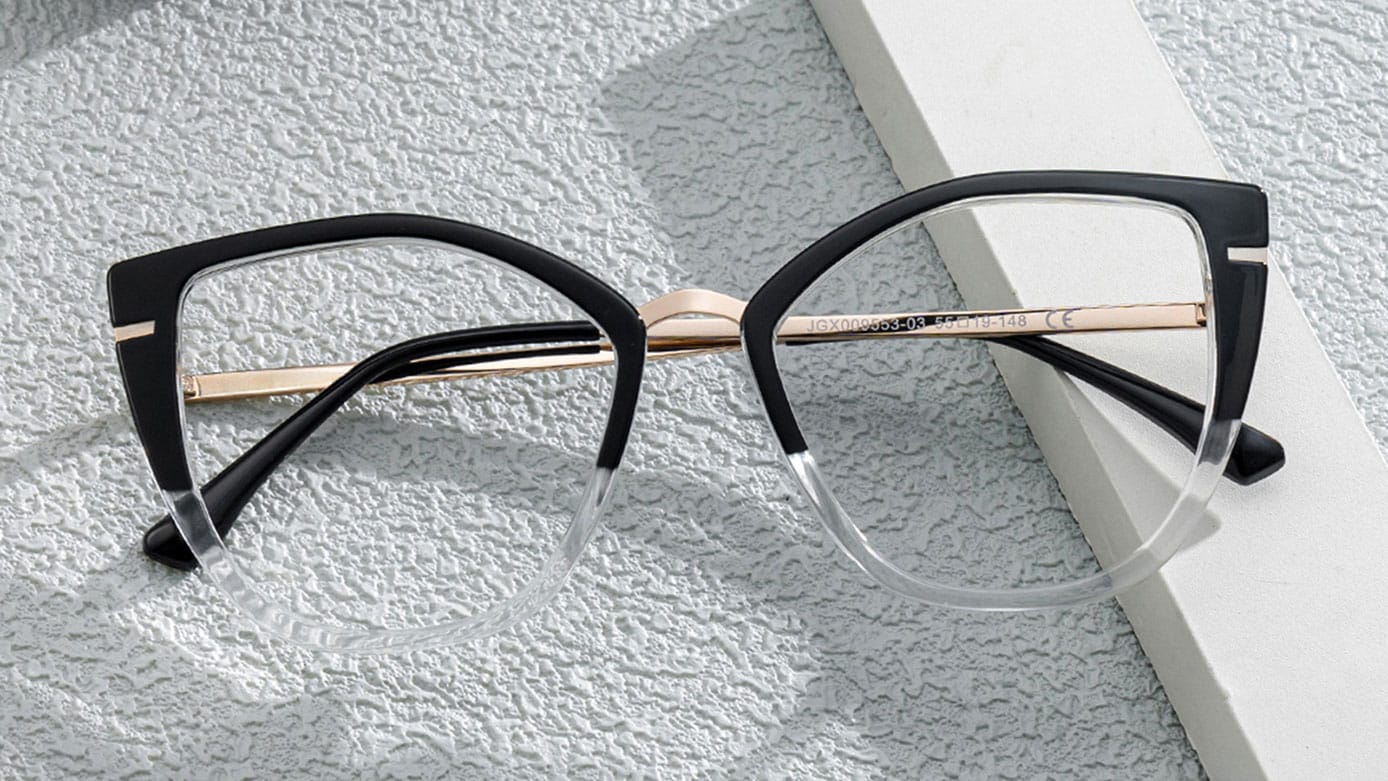It comes around once every year or two: that exciting (or dreadful) time when you’re in the market for some fresh frames. It’s like Christmas, but you get to shop for yourself! And your task is pretty simple, at least on paper. All you need to do is find a pair of glasses that meet your vision needs and perfectly match your personality and style. Which seems straightforward enough until you realize you don’t have a clue about your sizing requirements. Like shopping for anything, the tricky part is finding the right fit!

Have you ever noticed the small numbers printed on the inside of the temples (the arms) or perhaps even the bridge of your glasses? While mysterious at first, these little, seemingly random digests hold valuable information that can help you make informed decisions when sizing your next pair. Let’s take a minute to delve into what these numbers mean and how you can use them to find your perfect pair of spectacles.
What Do the Numbers on Glasses Mean?
Let’s start with some simple definitions. The numbers on your glasses frames typically consist of three measurements relating to the sizing of your glasses frames:
1. Lens Width refers to the size (width-size) of each lens in millimeters (mm). Without this number, your lens might not cover the surface area of your eye!
2. Bridge Width refers to the measured distance between the two lenses. This number is affected by myriad factors, including frame design, nose shape, and facial balance.
3. Temple Length is the length of the arms that rest on your ears. This measurement determines whether a pair will fit. (If they don’t reach your ears, they aren’t for you!)
Key Components of Glasses Frame Numbers
Let’s take an example. Say you come across a series like this: 52-18-140. Each number corresponds to one of the measurements mentioned above in the order listed.

1. Lens Width
The lens width is the first number in the sequence. As mentioned, it measures the horizontal width of each lens in millimeters. So, for this series, 52mm is the lens width. Both lenses must be the same length, so you see one number for both lenses. Lens width is crucial for determining three things:
(1) if the lens covers your field of vision (you want to be able to see with the full function of your eye, so full coverage is important!),
(2) the amount of space the frames have to fit the lenses in them,
(3) how your eyewear will complement your face. For example, smaller lens widths are great for narrow faces, while wider lenses can suit broader face shapes.
2. Bridge Width
The bridge width is the second number in the sequence (in this case, 18mm), and it measures the narrowest space made in your frames for your nose to fit between the two lenses. Because your nose is a primary point of contact between your glasses and face, finding the sweet spot where your frames can sit comfortably is key. However, it is important to note that the bridge width doesn’t measure the literal bridge on your frames; instead, it measures the space designed for your nose (which is perfect, by the way!). So you want to consider both the design of your new frames and your nose when shopping. If the bridge width is too small, your glasses will pinch! If it’s too large, the frames will slide down.
3. Temple Length
The temple length is the third number in the sequence (140mm). It measures the length of the arms, from the hinges that align with your temple to the tips that rest behind your ears. This is one of the easier numbers to get right. If the temple length is too short, you may be shopping in the children’s section... Or your lenses will sit awkwardly close to your face. If the temple length is too long, the arms will protrude from behind your ears, and the frames will shift unportable around your face as your head moves. A proper temple length is your guarantee that your glasses stay in place without feeling too tight or loose.
Additional numbers or codes on your frames might refer to the model, color, or brand, but the three measurements mentioned above are the most essential.
How to Read ZEELOOL Frame Numbers?
When browsing ZEELOOL’s stylish collections, you’ll notice these numbers clearly displayed both in product descriptions and on the arms of the physical frames. We want you to feel confident when selecting the perfect fit for your look.
If you’re eyeing a pair of bold cat-eye frames from ZEELOOL, you might see the measurements listed as 50-20-145. With this information, you can compare to your past glasses and check for lens width, bridge width, and temple length to align with your face shape and comfort preferences. If you’re unsure, Zeelool’s helpful guides and customer support team can assist you in finding the right fit.
How to Read Non-ZEELOOL Frame Numbers?
For non-ZEELOOL frames, the process is similar. Look for the sequence of three numbers inside the temples or bridge. Keep in mind that sizing standards are consistent across most eyewear brands, so these measurements can guide you regardless of where you shop. When shopping in-store or online, compare these numbers to your current pair of glasses or consult your optician to ensure the best fit. This is a great starting point.

Why Understanding Frame Numbers Matters?
Knowing what the numbers on glasses frames mean empowers you to:
Find frames that fit comfortably and securely.
Experiment confidently with different styles, knowing they’ll match your size requirements.
Make online shopping a breeze, especially when browsing trendy options from ZEELOOL.
Practical Style Tips for Fitting Different Occasions
Picture this: You’re scrolling through ZEELOOL’s website and spot a pair of trendy aviators with 54-19-145 measurements. By understanding these numbers, you will know how well a pair fits your face. From there, you can use ZEELOOL’s easy-to-use filters and detailed product descriptions to zero in on the perfect pair.
Now that you understand the logistics of sizing and how to read glasses-frame numbers, you can focus on selecting frames for style. Where and when are you wearing your glasses?
Something everyday chic? Opt for versatile styles like sleek metal frames or subtle tortoiseshell patterns. Or perhaps you wear them more in professional settings. Have you considered a classic shape like rectangular or round frames in neutral colors for a polished look? Or (and I really should have started with this), are you wearing them to make a statement at the function?
Experiment with bold colors, oversized frames, or unique shapes to express your personality.
Quality, Durability, and Style You Can Trust
Whether you’re shopping for frames with ZEELOOL or exploring other brands, remember that quality and durability are just as important as style. ZEELOOL’s frames are crafted carefully, offering various options that suit diverse tastes and needs. From lightweight materials for all-day wear to sturdy designs that last, ZEELOOL ensures your glasses are both fashionable and functional.




















